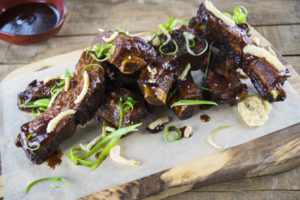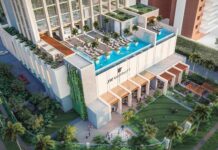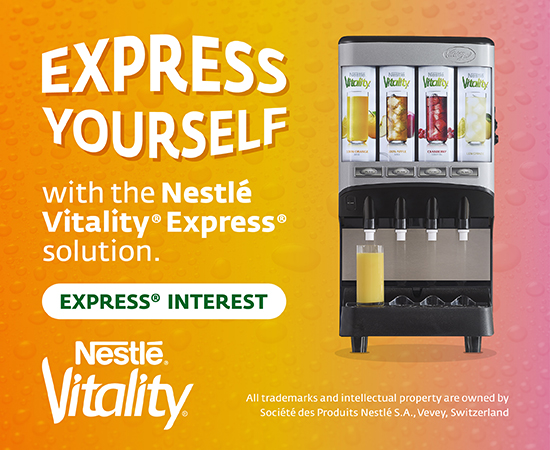The current cycle is bringing significant changes to properties across Embassy Suites by Hilton’s portfolio in the form of interior updates and refreshed food and beverage concepts. And, in the future, Embassy Suites plans to provide more food and beverage options and experiences that attract and entertain leisure weekend travelers and families in addition to corporate clientele. Alan Roberts, global head of Embassy Suites by Hilton, spoke with LODGING about the brand’s refresh and why F&B is such a big focus.
Why is Embassy Suites going through a refresh right now?
Embassy Suites reached a point in our lifecycle where license agreements began to expire. In 2016 and 2017, owners were either resigning or selling the hotel depending on their position strategy-wise. Sixty hotels have completed the Atrium Refresh, and another 15 will finish by the end of the year. In all, that’s about an $800 million facelift and reinvestment in the brand. We’ve reclaimed the atrium by eliminating overgrown plants and meandering water. Although we still have limited foliage elements, it’s scaled back and gives space to owners. We’re also relocating the bar to the atrium, which activates that space to draw people in for our complimentary eating reception.
Why the focus on F&B?
The face of hospitality is becoming the food and beverage industry. It’s how hotels will differentiate from Airbnb and other lodging organizations that don’t provide the full gamut of dining experiences. We’ve done this by repurposing our bar for the evening reception.

What strategy or strategies are you using to bring in more F&B revenue on a property level?
About 40 to 50 percent of guests take advantage of our complimentary receptions. Many do so in locations where there are limited options. If they don’t like what’s offered, they don’t have another choice and can’t upgrade to a premium level. We’re taking the new space from the Atrium Refresh and building a bar there so they can have more offerings. The idea is to have complimentary items available, but convince travelers to stay for a beer, get a whole meal they just sampled, and buy more.
How is the refresh impacting brand consistency?
Our first prototypes came out 25 to 30 years ago and are very different from where we are now. It’s important that we bring them all together into an eclectic collection that has a solid feel. Each guest should know they’re in an Embassy Suites when they enter any of our hotels, regardless of when it was built. How it looks and feels should drive that upper upscale experience.
Has the type of guest staying at Embassy Suites changed since the beginning?
Our guests haven’t changed. The nice thing about Embassy Suites is that people don’t think of us as a corporate hotel, yet we’re a very strong corporate player. During this cycle, the brand became a little needy in capital, and we lost some of our corporate clientele. They are coming back to us in markets where we completed renovations, and that’s a strong success story for us. That gives us the confidence and incentive to keep us on this journey.
However, as we change, I don’t foresee us changing our dynamic. When we start to build our breakfast initiative, we’ll keep in mind our leisure weekend travelers and appeal strongly to that dynamic. The value of our breakfast has to be important or we risk losing our differential. We’re currently thinking of a kid-friendly buffet with breakfast standards and creative options like build-your-own waffle stations.
Is Embassy Suites part of the push to localize F&B offerings?
Absolutely. We have to allow our hotels to be able to do what’s relevant and local. That applies to evening receptions. We want them to pass around specials that are relevant to the market. They have to market to their clientele and the experience had to be consistent with the area.
When determining and implementing these changes to the brand, how are you involving owners?
We work with our Owners Advisory Council. For our evening reception, we shared three different ideas, and the last idea we decided to use. We’ve been doing the same with our breakfast reception concepts, and when we finish testing, we’ll share with our Owners Advisory Council and take their feedback to test again. Most of our owners are very entrepreneurial and vocal about their opinions.
How have you used data to shape this refresh?
We can’t do anything without data because that drives everything. The next two years for Embassy Suites are going to be finishing up this product lifecycle, making our changes, and driving it forward. There will still be a portion of the brand that isn’t there yet, but when the natural cycle is over, that will only be a small percentage.











